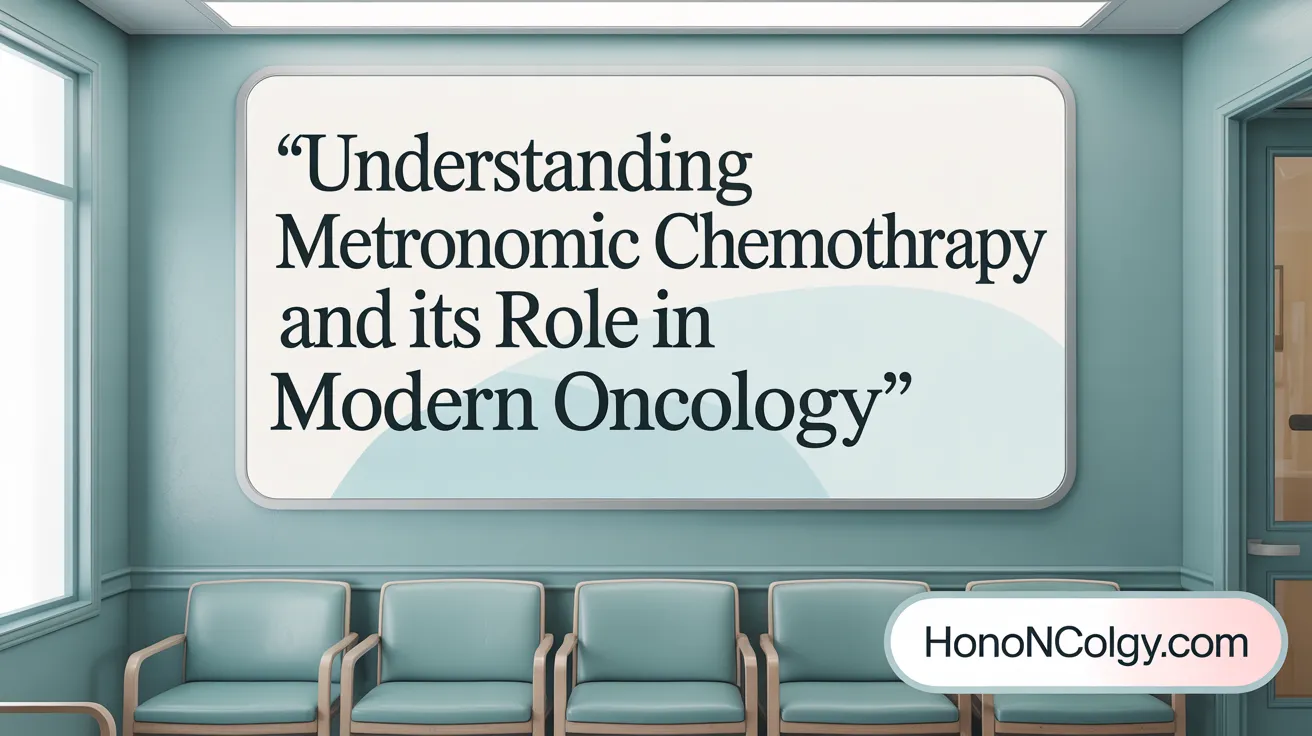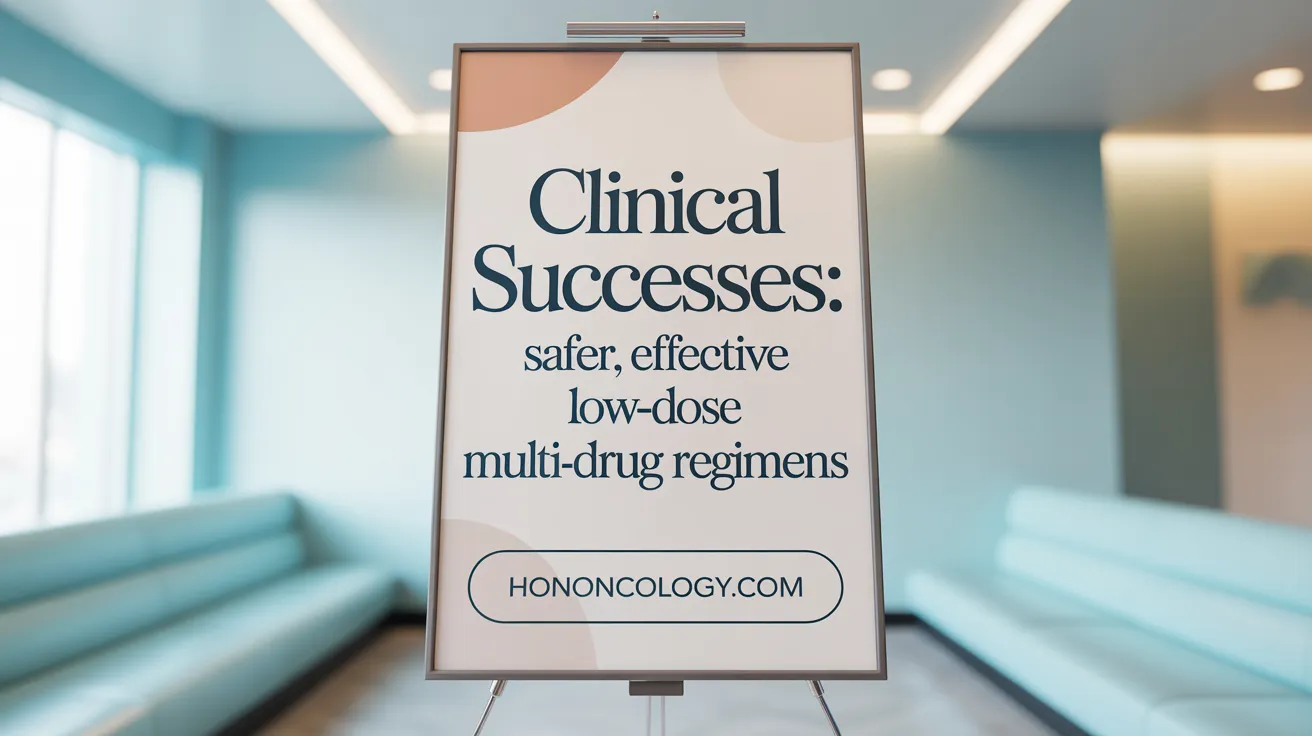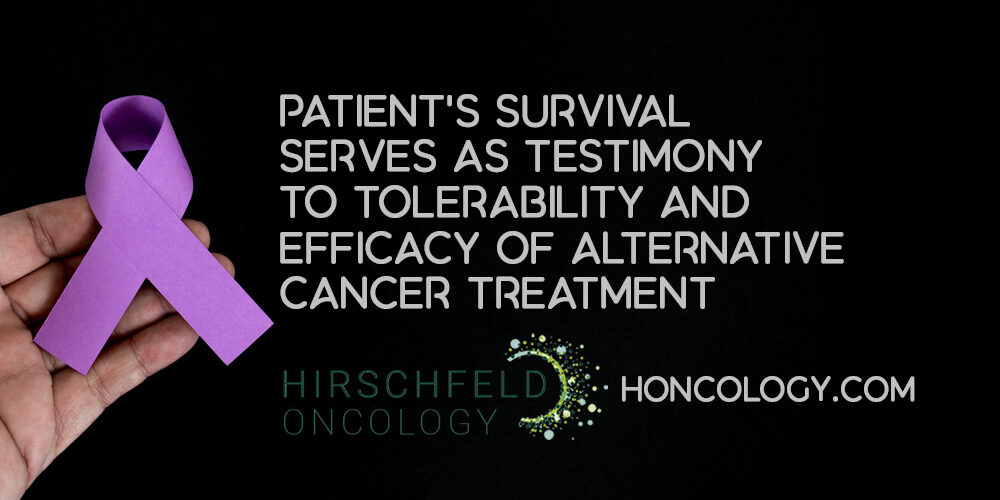Introduction to Low-Dose Multi-Drug Regimens in Cancer Care
Defining Low-Dose Chemotherapy
Low-dose chemotherapy, often referred to as metronomic chemotherapy, involves administering cytotoxic drugs at lower doses but with increased frequency and regularity. This approach contrasts with traditional high-dose regimens by aiming to minimize toxicity while maintaining effective control of cancer growth.
Principles Behind Multi-Drug Regimens
Multi-drug regimens combine several agents targeting different molecular pathways of cancer progression. The rationale lies in achieving comprehensive tumor suppression by concurrently interfering with multiple cellular targets. Using lower doses of each drug reduces the likelihood of resistance, as cancer cells find it harder to adapt simultaneously to various agents.
Clinical Advantages of Low-Dose Strategies
Clinically, low-dose combination therapies have demonstrated comparable efficacy to standard high-dose treatments but with significantly reduced side effects. For example, in certain cancers such as post-transplant lymphoproliferative disorders and desmoid tumors, these regimens have achieved overall survival rates up to 75-85%, while limiting toxicity common with traditional dosing.
Furthermore, low-dose approaches tend to preserve immune function and reduce adverse events like anemia and fatigue, making them especially suitable for elderly or frail patients. They also avoid stimulating the tumor microenvironment to secrete factors that can promote recurrence, thereby improving long-term outcomes.
In summary, low-dose multi-drug regimens combine the effectiveness of targeting multiple cancer pathways with an improved safety profile, offering a promising direction in modern oncology care.
Foundations of Low-Dose Chemotherapy in Oncology

What is metronomic chemotherapy and how are dosing schedules structured?
Low-dose chemotherapy, often called Metronomic chemotherapy, involves administering lower doses of cytotoxic drugs more frequently and continuously without long drug-free breaks. This contrasts with traditional high-dose chemotherapy that uses the maximum tolerated dose (MTD) at longer intervals (Low Dose Chemotherapy, FDA Project Optimus for dose selection). Metronomic doses typically range from one tenth to one third of MTD, aiming to minimize toxicity while controlling disease progression.
What mechanisms make low-dose chemotherapy effective?
Metronomic chemotherapy primarily targets the tumor microenvironment, especially tumor blood vessels (anti-angiogenic effect) by damaging endothelial cells and inhibiting new vessel formation. Additionally, it modulates the immune system by depleting immunosuppressive cells like regulatory T cells and myeloid-derived suppressor cells and enhancing dendritic cell function and immunogenic tumor cell death. These combined effects improve tumor control beyond direct cytotoxicity (Metronomic chemotherapy, Immunogenic Cell Death and Autophagy in Chemotherapy).
What clinical evidence supports low-dose chemotherapy's efficacy and safety?
Clinical studies and meta-analyses reveal that metronomic chemotherapy achieves tumor control rates around 26-40%, with disease stabilization in over half of patients. Response rates of 35-40% have been reported in desmoid tumors and lymphomas using low-dose regimens. Compared to conventional high-dose chemotherapy, low-dose approaches show similar efficacy but significantly lower treatment-related toxicity, making them suitable for elderly or frail patients (Low-dose chemotherapy overview, Low-dose metronomic chemotherapy overview, Low Dose Chemotherapy, Low-dose chemotherapy regimens). Improved overall survival has also been observed in specific cancers like early lung and breast cancer.
What innovative strategies does Hirschfeld Oncology use to redefine cancer care?
Hirschfeld Oncology integrates personalized medicine, immunotherapy, and experimental therapies with low-dose chemotherapy regimens. This multifaceted approach leverages low-dose chemotherapy schedules to reduce side effects while enhancing effectiveness, providing a refined balance that improves patient outcomes and quality of life (Future of cancer treatment, Innovative cancer therapies, Combination therapy in cancer).
Multi-Drug Combination Therapy: A Strategic Approach
Why combine multiple agents at low doses?
Multi-drug combination therapy uses several drugs at lower, carefully selected doses to attack cancer through different biological pathways simultaneously. This approach targets multiple components of tumor growth and survival mechanisms, such as receptor tyrosine kinases, MAP kinase signaling, and angiogenesis, without the toxicity associated with high-dose regimens. By dosing below maximum tolerated levels, it minimizes adverse effects while maintaining or improving efficacy. For further reading, see Multiple low dose therapy, multi-target cancer therapies, and Combination therapy in cancer.
What advantages does this have over monotherapy?
Combination therapies enhance treatment outcomes by addressing tumor heterogeneity—where different cancer cells rely on varying growth signals—and by reducing the likelihood that tumors develop resistance. Low-dose combinations impose less selective pressure, limiting resistant clones' emergence. Also, targeting multiple pathways in tandem can slow tumor growth, reduce metastasis, and affect cancer stem cell populations, which are often resistant to single-agent treatments. Clinically, such strategies can improve progression-free survival and provide more sustained disease control. Key insights can be found in Combination cancer therapies, Combination therapy in cancer, and Combination therapy benefits and risks.
What does emerging clinical data show about low-dose multi-drug combinations?
Recent preclinical and clinical studies demonstrate promising results with low-dose multi-drug regimens. For example, optimized drug combinations targeting colorectal carcinoma models achieved about 80% tumor growth reduction with minimal toxicity. Trials in non-small cell lung cancer models show that using only 20% of the usual doses in combinations effectively inhibits key signaling pathways and prevents resistance. Additionally, low-dose metronomic chemotherapy regimens combining agents like methotrexate and vinblastine provide durable disease control with fewer side effects. These data highlight the therapeutic potential of combining lower doses of multiple agents to optimize cancer treatment efficacy and safety. For detailed studies, see Therapeutically guided multidrug optimization (TGMO) technology, Low-dose metronomic chemotherapy overview, and Low-dose chemotherapy overview.
Model-Guided Dose Optimization Beyond Maximum Tolerated Dose
What are the limitations of the traditional MTD dosing paradigm?
Traditional oncology drug development focuses on establishing the maximum tolerated dose (MTD) — the highest dose a patient can receive without unacceptable toxicity. However, this approach often results in dosing that is unnecessarily high, causing excessive side effects without additional benefit. Particularly with targeted therapies and immunotherapies, efficacy can plateau well below the MTD, and doses above this threshold may not improve outcomes but worsen patients’ quality of life. For detailed insights into these challenges, see Strategies for Optimizing Oncology Dosages and Dose optimization in cancer drug development.
How are model-informed dose selection and the concept of Optimal Biological Dose (OBD) improving treatment?
Modern dose optimization integrates diverse data sources through pharmacokinetic/pharmacodynamic modeling, biological markers, and patient-reported outcomes to identify the Optimal Biological Dose (OBD). OBD aims to balance efficacy and tolerability rather than simply pushing to the highest tolerable dose. By considering drug behavior, response variability, target saturation, and toxicity profiles, model-based strategies support safer and more effective dosing that can maximize benefit while minimizing harm. For comprehensive coverage on this approach, refer to Model-Based Dose Selection in Cancer Treatment and FDA Project Optimus for dose selection.
What role do adaptive trials and initiatives like FDA’s Project Optimus play?
Adaptive and seamless trial designs allow for more flexible evaluation of multiple dose levels throughout development, increasing efficiency and precision in defining dosing regimens. Regulatory initiatives such as the FDA’s Project Optimus advocate for systematic dose optimization early in clinical programs. The project encourages randomized dose-ranging studies and incorporation of comprehensive safety data to move beyond the one-size-fits-all MTD approach. This paradigm shift fosters development of individualized, tolerable regimens with improved clinical benefits. For further details, see Adaptive Clinical Trials for Dose Evaluation and FDA Project Optimus Dose Optimization.
Together, these advancements are transforming oncology dosing strategies, emphasizing tailored, optimized dosing for modern cancer therapies rather than relying solely on maximum tolerated dosages. For an overview of these transformative strategies, consult Modern Approaches to Oncology Dosage.
Mechanistic Insights: How Low-Dose Regimens Prevent Tumor Recurrence and Resistance
Effects of low-dose chemotherapy on tumor microenvironment and stroma
Low-dose chemotherapy, often administered in a metronomic chemotherapy manner, exerts profound effects on the tumor microenvironment, particularly on the stromal fibroblasts. Unlike conventional high-dose chemotherapy, which can inadvertently activate pro-tumorigenic stromal cells, low-dose regimens minimize adverse changes in the tumor niche. This approach targets tumor-supporting cells and disrupts pathological interactions that facilitate tumor regrowth (Low-dose chemotherapy regimens.
Suppression of ELR chemokine secretion by fibroblasts
A crucial mechanism behind the benefits of low-dose chemotherapy involves the suppression of ELR chemokine secretion by fibroblasts within the tumor stroma. High-dose chemotherapy stimulates fibroblasts to release these proinflammatory proteins, which promote tumor recurrence by attracting immune cells and enhancing tumor cell survival and invasiveness. Low-dose regimens prevent this chemokine upregulation, thereby limiting signals that favor tumor progression (Low-dose chemotherapy overview, Tumour recurrence prevention.
Impact on tumor-initiating cells and metastasis prevention
Low-dose chemotherapy reduces the capacity of fibroblasts to induce the formation of tumor-initiating cells, a vital population responsible for tumor growth and metastasis. By restraining tumor angiogenesis and immune cell recruitment, this regimen suppresses pathways essential for metastasis. Preclinical murine models of breast and pancreatic cancers demonstrate that low-dose treatments prolong survival by effectively controlling these tumorigenic processes (Metronomic chemotherapy benefits, Tumor blood vessel effects in LDM therapy).
In summary, low-dose chemotherapy remodels the tumor environment by attenuating stromal activation and chemokine-mediated tumor support, helping prevent recurrence and resistance while enhancing overall treatment outcomes (Low-dose chemotherapy and immune response, Low-dose chemotherapy disease control and toxicity).
Immunological Effects Amplified by Low-Dose and Combination Therapies
How does low-dose chemotherapy modulate immune responses?
Low-dose chemotherapy, often given in a metronomic schedule, goes beyond simply inhibiting tumor growth—it also enhances the body’s immune response. By administering cytotoxic drugs at low, frequent doses, this approach minimizes toxicity while improving immune surveillance. It reduces populations of immunosuppressive cells such as regulatory T cells and myeloid-derived suppressor cells. Concurrently, it promotes the maturation of dendritic cells that are key for presenting tumor antigens to the immune system. This immune support can contribute to sustained tumor control and better clinical outcomes, especially for elderly or frail patients (Low-dose metronomic chemotherapy overview, Metronomic chemotherapy, Low-dose chemotherapy disease control and toxicity, Low-dose chemotherapy for desmoid tumors.
What role does autophagy play in enhancing immunogenic cell death?
Autophagy, the cellular process of recycling damaged components, supports immunogenic cell death (ICD) when activated in tumor cells. Agents that induce autophagy, like rapamycin, enhance the release of tumor antigens and danger signals such as ATP, which activate dendritic cells and recruit T cells into the tumor microenvironment. Combining low-dose chemotherapy with autophagy enhancers—termed chemotherapy/autophagy-enhancing regimens—has been shown in preclinical models to trigger systemic antitumor immunity. This includes increased infiltration of CD3+, CD4+, and CD8+ T cells and a reduction in immunosuppressive regulatory T cells, boosting the body's ability to recognize and destroy cancer cells (Immunogenic Cell Death and Autophagy in Chemotherapy, Combination therapy in cancer, Combination cancer therapies).
Are there clinical examples demonstrating improved immune responses?
Clinical trials underscore the promise of low-dose and combinational approaches for immunomodulation. For example, low-dose nivolumab immunotherapy substantially improved one-year survival and tumor control in patients with advanced head and neck cancers while reducing treatment costs. Additionally, low-dose chemotherapy combined with autophagy-inducing agents has demonstrated significant tumor growth inhibition along with elevated antitumor T cell activity in animal studies, supporting its translational potential. Such strategies highlight how integrating immune activation with traditional cytotoxic regimens can produce enhanced, durable responses against cancer (Low dose cancer immunotherapy trial India, Combination therapy in cancer, Low-dose chemotherapy and immune response.
These insights illustrate the emerging paradigm where low-dose and combination therapies not only target cancer cells directly but also harness and amplify the immune system’s natural capacity to combat tumors effectively.
Recent Successes of Low-Dose Chemotherapy in Specific Malignancies
Use in AIDS-associated NHL and post-transplant lymphoproliferative disorder
Low-dose chemotherapy (LDM) has shown promising efficacy with reduced toxicity in AIDS-associated non-Hodgkin's lymphoma (NHL) (Low-dose chemotherapy overview, Low-dose chemotherapy and immune response, Low-dose chemotherapy in AIDS-associated NHL. In such immunocompromised patients, LDM balances disease control while minimizing adverse effects. Moreover, in post-transplant lymphoproliferative disorder (PTLD), therapy combining low-dose cyclophosphamide with prednisone has led to an overall survival (OS) rate of 75%, demonstrating the regimen's effectiveness in this difficult-to-treat condition (Low-dose cyclophosphamide with prednisone in PTLD. This combination is a viable treatment option that also benefits from improved tolerability (Rituximab treatment in PTLD, Combination of rituximab and low-dose chemotherapy in PTLD.
Responses in Desmoid Tumors and Soft Tissue Sarcomas
Desmoid tumors, which are fibroblastic neoplasms, respond to low-dose methotrexate combined with vinblastine or vinorelbine, attaining response rates around 35-40% (Low-dose methotrexate with vinblastine or vinorelbine, offering long-term control of disease in 50-70% of patients, supporting the use of LDM in these tumors where aggressive treatment is often avoided due to their benign but locally invasive nature. Similarly, low-dose anthracycline-based chemotherapy administered over 6 to 8 cycles shows response rates between 37% and 54% in soft tissue sarcomas, including desmoid tumors (Response rates of low-dose anthracycline chemotherapy. Pegylated liposomal doxorubicin, a less cardiotoxic anthracycline formulation, achieves approximately 35% response rate in desmoid tumor patients, particularly favorable for pediatric cases (Pegylated liposomal doxorubicin in desmoid tumors, Cardiac toxicity and pegylated liposomal doxorubicin.
Survival Outcomes with Low-Dose Cyclophosphamide and Prednisone Combinations
Regimens featuring low-dose cyclophosphamide combined with prednisone in PTLD patients have yielded noteworthy survival benefits. The 75% overall survival is a significant clinical outcome given the complexity of post-transplant immunosuppression. When rituximab, an anti-CD20 antibody, is added to low-dose chemotherapy, the OS can increase up to 85%, underscoring the advantage of combining immunotherapy with LDM (Combination of rituximab and low-dose chemotherapy in PTLD. These findings reinforce the safety and efficacy balance low-dose chemotherapy can provide in sensitive populations such as transplant recipients and those with immunodeficiency (Benefits of low-dose chemotherapy.
Overall, these clinical successes highlight the versatile role of low-dose chemotherapy across distinct malignancies, offering effective disease control with fewer toxic effects compared to traditional high-dose regimens (Low-dose chemotherapy disease control and toxicity.
Multi-Targeted Drugs and Low-Dose Combinations: Expanding Therapeutic Horizons
FDA-approved multi-target agents and their mechanisms
Multi-target drugs have transformed cancer treatment by targeting several key signaling pathways simultaneously. Approved agents like Imatinib, Lapatinib, Sorafenib, and Sunitinib inhibit multiple receptor tyrosine kinases (RTKs) such as VEGFR, EGFR, HER2, and PDGFR, which play critical roles in tumor growth, angiogenesis, and metastasis. By disrupting these interconnected pathways, these drugs can effectively suppress tumor progression. For example, Imatinib targets Bcr-Abl, c-KIT, and PDGF receptors, while Sorafenib inhibits Raf kinases alongside VEGFR and PDGFR, demonstrating a broad mechanistic coverage (multi-target cancer therapies).
Strategies for developing multi-target low-dose drugs
Development strategies for multi-target drugs leverage both random screening and knowledge-based designs, including fusion, merging, or linking of pharmacophores to create compounds capable of diverse target engagement. Recent research supports using multiple low-dose combinations to reduce selective pressure and the likelihood of resistance. Partial inhibition across multiple pathway nodes at sub-maximal doses can sum to effective pathway shutdown while minimizing toxicity. This approach was validated in EGFR-mutant lung cancer models where low-dose combinations targeting EGFR, RAF, MEK, and ERK nodes prevented resistance and achieved tumor control with limited adverse effects (Multiple low dose therapy).
Integration with low-dose chemotherapy for enhanced efficacy
Integrating multi-targeted agents with low-dose chemotherapy or metronomic regimens enhances therapeutic outcomes by attacking tumor cells and their microenvironment simultaneously. Low-dose metronomic chemotherapy disrupts tumor angiogenesis and modulates immune responses with reduced toxicity, making it compatible with multi-target agents (Low-dose chemotherapy overview, Low-dose metronomic chemotherapy overview. Combining these approaches can maximize tumor pathway inhibition, inhibit pro-survival signaling, and stimulate anti-tumor immunity (Combination therapy in cancer, Strategic effective cancer treatment). Advanced technologies such as therapeutically guided multidrug optimization (TGMO) technology enable precise identification of synergistic yet low-dose combinations, which have demonstrated superior tumor suppression and safety profiles compared to standard high-dose monotherapies. This integrated strategy provides a promising avenue to expand treatment effectiveness while limiting adverse effects in cancer therapy.
Targeting Tumor Pathways Through Rational Drug Combinations

What are the key pathways targeted in cancer combination therapies?
Combination cancer treatments often aim at multiple critical tumor pathways to maximize efficacy and minimize resistance. Important targets include the MAP kinase (MAPK) pathway, which regulates cell proliferation and survival; the VEGF/VEGFR pathway, central to tumor angiogenesis; the Nrf2-Keap1 pathway, involved in antioxidant responses that cancer cells exploit to survive oxidative stress; and the HIF1alpha pathway, which enables tumor adaptation to hypoxic conditions. Targeting these pathways together attacks cancer growth and angiogenesis while disrupting tumor survival strategies. For more on Combination therapy in cancer and strategic treatment combinations, see the detailed discussions.
How are epigenetic modulators like HDAC inhibitors integrated into combination regimens?
Epigenetic alterations are critical in cancer progression, and histone deacetylase inhibitors (HDACi) such as vorinostat, romidepsin, and valproic acid are valuable agents in combination therapies. These drugs induce cancer cell differentiation, cell cycle arrest, and apoptosis, while also inhibiting angiogenesis. When combined with other treatments, HDAC inhibitors can modulate gene expression patterns that sensitize tumors to chemotherapy, immunotherapy, or targeted agents, thereby helping overcome resistance and enhance therapeutic outcomes. More on the role of HDAC inhibitors in cancer therapy can be found here.
What roles do angiogenesis inhibitors, autocrine growth factor blockers, and apoptosis inducers play in combinations?
Angiogenesis inhibitors like bevacizumab and itraconazole disrupt the tumor’s blood supply by targeting VEGF/VEGFR signaling, limiting growth and metastasis. Blocking autocrine growth factors such as EGF, IGF-2, and serotonin restricts tumor proliferation and survival signals. Additionally, agents that induce apoptosis—through extrinsic or intrinsic pathways—can be combined to provoke cancer cell death more effectively. For example, apoptosis inducers such as nitroglycerin have been explored in combination regimens to overcome resistance and trigger tumor cell clearance. Together, these drug classes target complementary biological processes essential for tumor maintenance. More details are available in Combination therapy in cancer.
By employing rational combinations that target multiple pathways simultaneously, clinicians aim to reduce tumor heterogeneity and resistance, ultimately improving the effectiveness and durability of cancer treatments. This multifaceted approach tailors therapy to tumor biology, offering promise for more personalized and effective cancer management. Further insights on multi-target cancer therapies and future strategies in cancer treatment provide a broader context for these advancements.
Clinical Evidence Supporting Low-Dose Combinatorial Approaches

Clinical trials showing efficacy and reduced toxicity of low-dose combos
Recent clinical studies have demonstrated that low-dose combination chemotherapy regimens can effectively control cancer while minimizing toxicity. Low-dose metronomic chemotherapy overview, characterized by the frequent administration of low doses without extended breaks, has shown comparable efficacy to standard high-dose chemotherapy but with a superior safety profile. For instance, in elderly or frail patients, LDM results in fewer severe adverse effects such as anemia and fatigue, highlighting its tolerability.
Examples of metronomic chemotherapy improving progression-free survival
Phase II trials reveal that metronomic chemotherapy yields response rates around 26% and disease control rates up to 56%, with median progression-free survival of about 4.6 months. Notably, in early-stage lung and breast cancers, metronomic regimens have improved overall survival metrics. This approach disrupts tumor angiogenesis and modulates immune responses, targeting tumor microenvironment vulnerabilities and reducing tumor-initiating cells without stimulating pro-tumorigenic chemokine release (Low-dose chemotherapy regimens, Metronomic chemotherapy).
Data from colorectal carcinoma optimized low-dose drug combinations
In colorectal carcinoma models, therapeutically guided multidrug optimization (TGMO) technology using in silico modeling plus experimental validation identified efficacious low-dose drug combinations targeting key deregulated pathways, especially MAP kinase signaling and cell cycle checkpoints. These optimized dose combinations (ODCs) reduced tumor growth by approximately 80% in vivo with minimal toxicity, outperforming standard chemotherapy regimens like FOLFOX. ODCs maintained activity in patient-derived tumor cells, including metastatic tissues, supporting the potential for personalized low-dose combination therapies with enhanced efficacy and safety.
Addressing Resistance: How Low-Dose Multi-Drug Regimens Offer an Advantage
How Do Low-Dose Multi-Drug Regimens Reduce Resistance?
Cancer cells often develop resistance to therapy by adapting to single-agent treatments, especially when high doses target only one pathway.
Low-dose multi-drug regimens work by partially inhibiting multiple key signaling nodes simultaneously instead of fully blocking a single one.
This strategy lessens selective pressure, making it harder for cancer cells to evolve resistance.
Targeting various points in crucial pathways like MAPK and EGFR signaling ensures a more comprehensive shutdown of tumor growth mechanisms.
(For more details, see Multiple low dose therapy and Combination therapy in cancer
What Evidence Supports the Prevention of Resistance in EGFR-Mutant NSCLC?
In experimental models of EGFR-mutant non-small cell lung cancer (NSCLC), combinations of low doses (about 20% of usual effective doses) targeting EGFR, RAF, MEK, and ERK nodes effectively blocked MAPK signaling and cancer cell proliferation.
Notably, unlike standard high-dose treatments, cancer cells under low-dose multi-drug combinations did not develop resistance during the treatment period.
Patient-derived xenograft (PDX) models of NSCLC showed tumor regression without severe toxicity and maintained tumor control even with intermittent drug holidays.
(Refer to Multiple low dose therapy and Combination cancer therapies)
What Benefits Are Seen in Resistant Cancer Cells and Patient-Derived Models?
Multi-drug low-dose therapies remained effective in EGFR-mutant NSCLC cells resistant to traditional EGFR inhibitors like osimertinib and gefitinib.
This suggests that these regimens can overcome existing drug resistance mechanisms.
Furthermore, the approach demonstrated broad applicability across various tumor models, including colorectal cancer patient-derived organoids and different lung cancer genetic backgrounds.
These findings highlight that low-dose multi-drug therapy can deliver effective tumor inhibition while minimizing toxicity and resistance development, representing a promising cancer treatment strategy.
(See also Therapeutically guided multidrug optimization (TGMO) technology)
Innovations in Targeted Delivery and Drug Conjugates Enhancing Low-Dose Strategies

How are antibody-drug conjugates improving specificity and internalization?
Antibody-drug conjugates (ADCs) are precision therapies that link cytotoxic drugs to antibodies targeting tumor-specific antigens. This design improves drug delivery directly into cancer cells, minimizing harm to healthy tissue. Recent advances by Mayo Clinic researchers combine antibody-drug conjugates in cancer therapy with proteolysis-targeting chimeras to enhance internalization, increasing drug uptake up to 1.9 times in preclinical breast cancer models. This strategy enhances efficacy while potentially reducing required doses and systemic toxicity.
What role do nanomedicine and hydrogel systems play in controlled drug delivery?
Nanomedicine offers biocompatible platforms, such as liposomal nanoparticles and polymeric nanoparticles, that enable targeted, controlled release of chemotherapy and targeted agents. These nanocarriers exploit tumor vascular features for enhanced permeability and retention, facilitating passive targeting. Hydrogels provide stimuli-responsive, localized drug delivery with sustained release, reducing systemic side effects. Such delivery technologies ensure that low-dose regimens maintain optimal drug concentrations at the tumor site, improving therapeutic index and patient tolerance. These aspects are comprehensively discussed in Innovative cancer therapies including Nanomedicine in cancer treatment and Mechanistic study of cancer drug delivery.
How does combining novel targeted agents with low-dose regimens advance precision oncology?
Integration of novel targeted therapies—like antibody conjugates, small molecule inhibitors, and multi-target drugs—with low-dose chemotherapy regimens enables attack on multiple cancer pathways while limiting toxicity. Multidrug low-dose combinations have demonstrated enhanced efficacy through pathway inhibition (e.g., MAPK signaling) and immune activation. Drug delivery innovations support this by improving biodistribution and minimizing resistance. Through tailored combinations and optimized dosing, precision oncology advances toward effective, personalized treatment with fewer adverse effects, as highlighted by studies on multi-target cancer therapies, Combination therapy in cancer including drug repurposing and pathway targeting, and Therapeutically guided multidrug optimization (TGMO) technology.
These innovations collectively foster a paradigm shift from traditional high-dose treatments to sophisticated low-dose strategies with increased specificity, controlled delivery, and combinational synergy to enhance cancer outcomes, reflecting the trends described in tumor treatment evolution including targeted cancer therapies and combination therapy and the future of cancer treatment emphasizing combination therapy benefits and personalized approaches.
Personalizing Low-Dose Multi-Drug Regimens with Advanced Technologies
Role of tumor genetic profiling and molecular diagnostics
Personalized cancer treatment begins with comprehensive tumor genetic profiling. This molecular diagnostic approach identifies specific mutations, receptor statuses, and gene expression patterns, enabling tailored therapy designs targeting diverse oncogenic pathways. Profiling guides the choice of agents for multi-target cancer therapies, low-dose chemotherapy combinations that minimize toxicity while maximizing efficacy by aligning treatment with tumor biology.
Use of AI, radiomics, and multi-omics data for treatment selection
Artificial intelligence (AI) significantly enhances precision oncology by analyzing complex datasets including genomic, proteomic, and imaging (Radiomics in cancer treatment) information. AI and machine learning models predict individual patient responses to therapies by integrating multi-omics data integration in precision oncology profiles and tumor heterogeneity. This approach facilitates the optimization of Multiple low dose therapy that targets multiple tumor vulnerabilities concurrently.
Advanced radiomics analyzes quantitative imaging features, revealing tumor microenvironment characteristics and heterogeneity that influence drug responsiveness. Combined with multi-omics data, AI-driven algorithms prioritize combination regimens and adjust dosages to balance efficacy and safety (Combination therapy in cancer advantages.
Clinical application of precision medicine in dosage and combination design
Clinically, precision medicine employs genetic and computational insights to design low-dose, multi-drug regimens personalized for each patient. Model-informed approaches enable dose optimization beyond maximum tolerated dose paradigms, focusing on optimal biological dose that maintains efficacy with fewer side effects (FDA-AACR Oncology Dose Optimization, FDA Project Optimus for dose selection). Techniques like Therapeutically guided multidrug optimization (TGMO) technology identify synergistic combinations at low doses that suppress key oncogenic pathways such as MAPK and PI3K/AKT.
Precision dosing also incorporates patient-reported outcomes and adaptive trial designs to refine therapies over time. This results in effective, less toxic regimens, improving quality of life and overcoming resistance (Dose optimization in cancer drug development).
What innovative strategies does Hirschfeld Oncology use to redefine cancer care?
Hirschfeld Oncology uses personalized medicine driven by tumor genetic profiling combined with cutting-edge AI technologies to develop individualized, low-dose, multi-drug treatments. This strategy harnesses advanced computational models to tailor treatment combinations that effectively address tumor complexity while minimizing toxicity, representing a paradigm shift in precision cancer care (Tumor treatment evolution with AI and targeted therapies, multi-target drug development strategies, Benefits of low-dose chemotherapy.
Compassionate Care and Personalized Treatment at Hirschfeld Oncology
What role does Dr. Azriel Hirschfeld play at Hirschfeld Oncology?
Dr. Azriel Hirschfeld is the founder and visionary leader of Hirschfeld Oncology. Under his guidance, the center brings together a multidisciplinary team that excels in exploring molecular components of cancer and pioneering advanced drug combination therapies. This leadership ensures that every treatment plan is grounded in the latest scientific innovations, offering patients cutting-edge, personalized cancer care based on multi-omics data integration in precision oncology.
How does Hirschfeld Oncology ensure a compassionate approach in cancer treatment?
At Hirschfeld Oncology, compassion is integral to every stage of treatment. The team emphasizes patient-centered communication, taking time to understand individual concerns and goals. Patients benefit from holistic support services designed to ease the emotional, physical, and practical challenges of cancer. This approach fosters a caring environment where patients feel respected, heard, and supported, delivering care that integrates low-dose chemotherapy overview principles to minimize side effects and improve quality of life.
How does Hirschfeld Oncology integrate scientific innovation with empathy to improve patient outcomes?
Hirschfeld Oncology seamlessly combines empathy with innovation to enhance patient outcomes. Treatment strategies are tailored not only to molecular tumor profiles but also to patient needs and preferences. This ensures therapies are both effective and aligned with quality-of-life considerations. By fusing advanced research with compassionate care practices, Hirschfeld Oncology pioneers a model of cancer treatment that offers hope and personalized attention through targeted therapies and combination therapy approaches, employing methods such as Radiomics in cancer treatment and therapeutically guided multidrug optimization (TGMO) technology to optimize efficacy and minimize toxicity.
Cost-Effectiveness and Accessibility Benefits of Low-Dose Therapies
Reduced toxicity allowing use in elderly and frail patients
Low-dose chemotherapy regimens, often administered in metronomic schedules, are recognized for their significantly reduced treatment-related toxicities compared to conventional high-dose chemotherapy. This reduction in adverse effects makes low-dose therapies particularly suitable for elderly and frail patients who are less able to tolerate the harsh side effects of standard treatments. The improved safety profile enables prolonged treatment and better quality of life for these patient populations without compromising disease control outcomes (Low-dose chemotherapy overview.
Lower drug doses translating to decreased treatment costs
Administering cancer drugs at lower doses naturally reduces the quantity of medication required, leading to decreased overall treatment costs. Clinical evidence, such as the study of low-dose nivolumab for advanced head and neck cancers in India, demonstrates dramatic cost reductions—to as little as 5% to 9% of standard-dose immunotherapy costs—while achieving comparable or better survival outcomes. This cost-effectiveness stems not only from less drug consumption but also from fewer hospitalizations and supportive care needs associated with reduced toxicity (Low-dose cancer immunotherapy trial India).
Clinical trial findings from low- and middle-income settings demonstrating accessibility
A pivotal trial conducted in India revealed that ultra-low doses of immunotherapy could significantly improve survival and tumor control at a fraction of the standard cost. This example highlights how low-dose regimens can expand accessibility in resource-limited settings where the high price of conventional cancer treatments often restricts patient access. The trial further suggests that dose reduction strategies may be adapted globally, improving affordability and availability of effective cancer therapies across diverse healthcare environments (Low-dose chemotherapy in AIDS-associated NHL; Low-dose nivolumab vs standard treatment.
Current Challenges and Future Directions in Low-Dose Multi-Drug Oncology Regimens

Need for more phase III trials and long-term data
Low-dose multi-drug regimens, including metronomic chemotherapy and low-dose combinatorial therapies, have shown promising efficacy with reduced toxicity in early-phase studies. However, the clinical evidence predominantly stems from phase II trials. More phase III trials are essential to establish definitive survival benefits and long-term safety profiles necessary for broad clinical adoption. Such trials will also clarify efficacy across diverse cancer subtypes and patient populations, particularly in comparators with standard high-dose protocols.
Balancing efficacy with minimizing side effects
An ongoing challenge is optimizing doses to maximize tumor control while minimizing adverse effects. Low-dose approaches aim to limit toxicity seen with maximum tolerated dose (MTD) chemotherapy, making treatment more tolerable, especially for elderly or frail patients. Yet, careful dose optimization guided by Model-Based Dose Selection in Cancer Treatment is critical to avoid underdosing that might compromise efficacy. Regulatory initiatives like the FDA's Project Optimus advocate integrating comprehensive safety and efficacy data early in drug development to define this balance.
Emerging research in biomarkers and adaptive trial designs
Innovation in biomarker discovery enhances the ability to personalize low-dose combination regimens by targeting tumor vulnerabilities and predicting patient responses. Integration of adaptive and seamless trial designs enables real-time dose adjustments and more efficient evaluation of multiple doses or drug combinations. This approach supports precise dose refinement and accelerates development timelines, improving the likelihood of successful outcomes while limiting unnecessary drug exposure.
Together, these advances position low-dose multi-drug oncology regimens to become more effective, safer, and tailored, addressing the complexity of cancer treatment in the future. For more on combination therapy in cancer and Strategies for Optimizing Oncology Dosages, see the linked resources.
Conclusion: The Emerging Paradigm of Low-Dose Multi-Drug Regimens in Modern Oncology
Clinical and Mechanistic Advantages of Low-Dose Multi-Drug Regimens
Low-dose multi-drug strategies offer a compelling alternative to conventional high-dose chemotherapy by combining effectiveness with markedly reduced toxicity. Clinical evidence demonstrates that such regimens maintain tumor control while sparing healthy tissue, leading to better patient tolerance and quality of life. Mechanistically, these therapies target multiple oncogenic pathways simultaneously at sub-maximal doses, thereby minimizing drug resistance and avoiding the stimulation of tumor-promoting stromal signals often seen with high-dose treatments. Additionally, low-dose protocols enhance anti-tumor immunity and disrupt angiogenesis, contributing to durable disease stabilization.
The Role of Personalized and Compassionate Care at Hirschfeld Oncology
Hirschfeld Oncology exemplifies a patient-centered approach, integrating personalized medicine with compassionate care. Their model emphasizes tailoring therapies to the unique molecular profile of each tumor, harnessing multi-drug low-dose strategies to optimize efficacy while minimizing adverse effects. This approach respects individual patient needs and conditions, particularly benefiting elderly or frail patients often unable to tolerate aggressive dosing. Through continual assessment and adaptation, Hirschfeld Oncology strives to improve not only survival but also patients' overall wellbeing.
Outlook: Innovation and Collaboration to Improve Patient Outcomes
The future landscape of cancer treatment is poised for transformation through collaborative innovation. Advances such as model-informed dose optimization, integration of immune modulation, and nanotechnology-driven drug delivery are converging to refine low-dose combination therapies further. Regulatory initiatives supporting dose personalization reinforce this trend. Combined with global data sharing and clinical trial diversity, these advances hold promise for more accessible, effective, and durable cancer therapies worldwide. Embracing these strategies could enhance response rates, reduce toxicity, and ultimately improve survival and quality of life for cancer patients globally.





.png)


.png)
.png)




